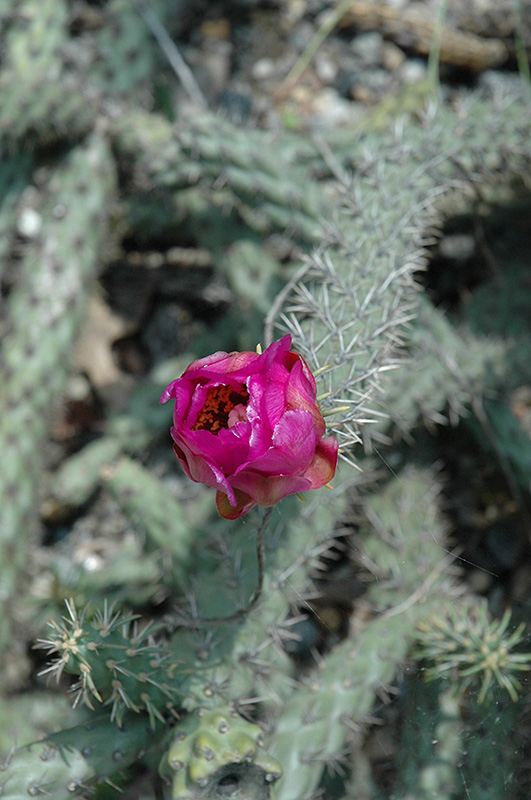Tree Cholla Cactus
Description
Very unique, stem-like, cylindrical growth instead of the usual pads, becomes woody with a layer of bark with age; stems topped with glowing fuchsia flowers; can be very spiny so handle pads carefully; edible fruit can be eaten raw or cooked
Landscape Attributes
Tree Cholla Cactus is a large succulent evergreen plant with an upright spreading habit of growth. It commonly grows as a shrub-like plant with multiple 'branches' and stems. As a type of cactus, it has no true foliage; the body of the plant is wholly comprised of a linked series of spiny grayish green narrow cylindrical segments which are connected together to form the branches of the plant. With age, this plant will eventually develop a woody brown 'trunk' at its base.
Tree Cholla Cactus is recommended for the following landscape applications;
Planting & Growing
Tree Cholla Cactus will grow to be about 9 feet tall at maturity, with a spread of 5 feet. It has a low canopy with a typical clearance of 1 foot from the ground, and is suitable for planting under power lines. It grows at a medium rate, and under ideal conditions can be expected to live for 40 years or more.
This plant should only be grown in full sunlight. It requires an extremely dry, well-drained growing location, and will usually die in standing water. It is considered to be drought-tolerant, and thus makes an ideal choice for xeriscaping or the moisture-conserving landscape. Like most succulents and cacti, this plant prefers to grow in poor soils and should therefore never be fertilized. It is not particular as to soil pH, but grows best in sandy soils. It is quite intolerant of urban pollution, therefore inner city or urban streetside plantings are best avoided. This species is native to parts of North America.
Tree Cholla Cactus makes a fine choice for the outdoor landscape, but it is also well-suited for use in outdoor pots and containers. Its large size and upright habit of growth lend it for use as a solitary accent, or in a composition surrounded by smaller plants around the base and those that spill over the edges. It is even sizeable enough that it can be grown alone in a suitable container. Note that when grown in a container, it may not perform exactly as indicated on the tag - this is to be expected. Also note that when growing plants in outdoor containers and baskets, they may require more frequent waterings than they would in the yard or garden. Be aware that in our climate, this plant may be too tender to survive the winter if left outdoors in a container. Contact our experts for more information on how to protect it over the winter months.

